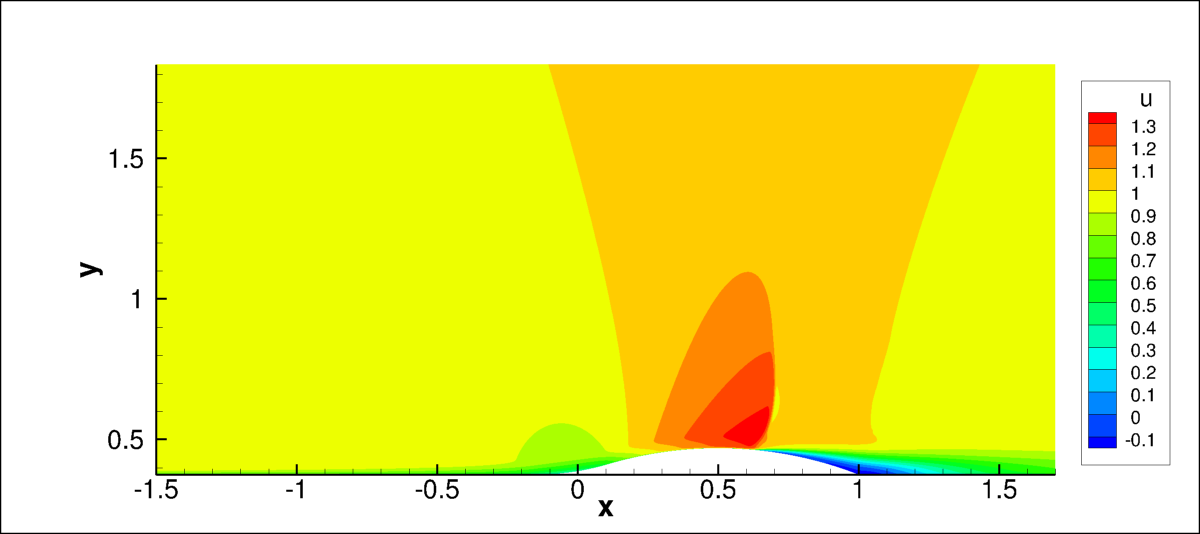 |
Langley Research CenterTurbulence Modeling Resource |
LES: Compressible Axisymmetric Transonic Separated Bump
Return to: Data from LES - Intro Page
Return to: Turbulence Modeling Resource Home PageThe data on this page were provided by A. Uzun of NIA.
This compressible LES case is for axisymmetric separating flow over
the Bachalo-Johnson transonic bump (AIAA Journal, Vol. 24, No. 3, 1986, pp. 437-443).
Some experimental data are available at the:
ATB: Axisymmetric Transonic Bump page.
The LES was run using a compressible code. The publication is:
This is a wall-resolved compressible-flow LES computation
at M=0.875. Several different variants were run for the study, but only one result (with the highest resolution used)
is available here. This is believed to be the most accurate computed result. Some relevant information is given below, but the
interested reader is referred to the paper for more details:
Long-time averaged LES data are provided below.
The geometry is described in detail in the paper. To summarize, the cylinder diameter was 15.24 cm.
The bump chord was 20.32 cm, with thickness of
1.905 cm and arc radius 0.5(t2 + 0.25c2)/t.
There was a small leading edge fillet with radius 18.30 cm.
The following figure shows the configuration:
The field data below contains LES time-averaged results with lengthscale nondimensionalized by chord. The data
include mean flow variables density, u-velocity, v-velocity, and pressure;
and turbulence quantities uu, vv, ww, and uv. Note the data is divided into 2 zones, inner (11841 x 351) and outer (5921 x 139).
Nondimensional mean flow and turbulence mean field data
is provided here (note that these are gzipped
Tecplot
formatted files, so you must either have Tecplot or know how to read their format in order to use it.
See README.tecplot):
Nondimensional velocity derivatives are
provided here (note that these are gzipped
Tecplot
formatted files, so you must either have Tecplot or know how to read their format in order to use it.
See README.velderivs.tecplot):
Surface pressure coefficients:
Surface skin friction coefficients:
Return to: Data from LES - Intro Page
Responsible NASA Official:
Ethan Vogel

Page Curator:
Clark Pederson
Last Updated: 11/05/2021